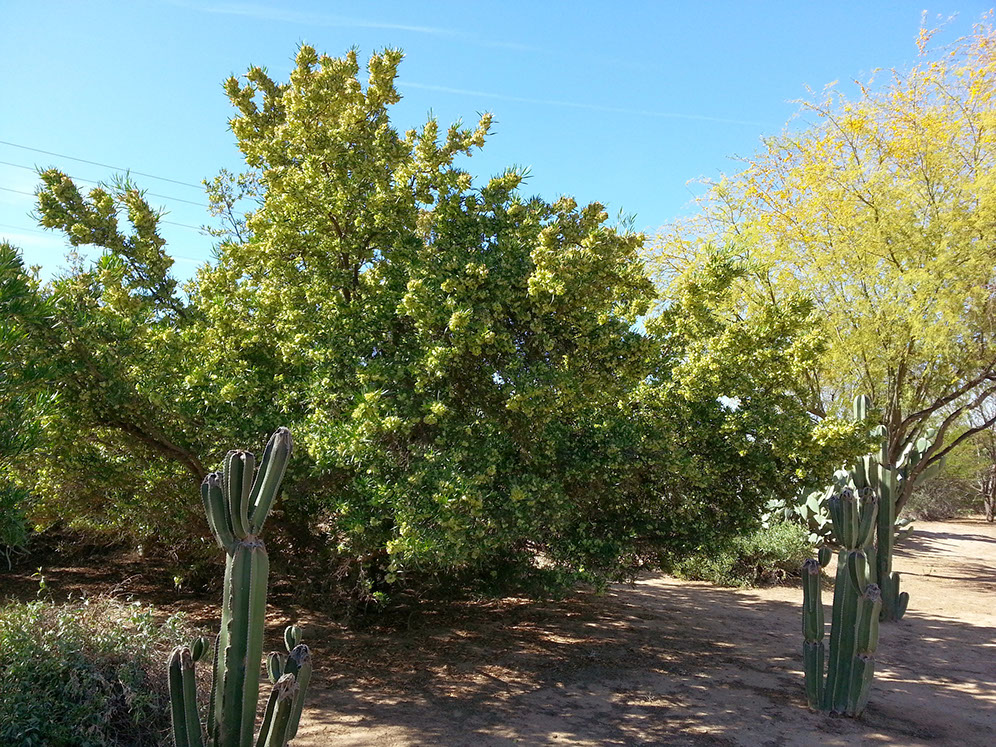


Dodoneaea angustifolia
Hopbush
Foliage: Evergreen
Mature Height: 12’ - 20’
Mature Width: 10’ - 15’
Growth Rate: Moderate
Hardiness: 18 degrees F
Exposure: Full Sun
Leaf Color: Green
Shade: Filtered
Flower Color: Yellow-Green
Flower Shape: Petal-less
Flower Season: Spring to Fall
Thorns: None
Propagation Method: Seed
Sizes Available: #25


Dodonaea viscosa var. angustifolia is one the few, evergreen, shrubs/small trees that bring a unique color and texture to desert adapted landscape designs. The droopy leaves are shiny light green above and paler green below, with thornless, light grey, finely fissured branch and trunk bark. The varnished looking leaf coating protects the plant from water loss. With a mature (unpruned) height that can reach 15 feet, it brings a lush, dense, green leaf canopy that integrates seamlessly with surrounding desert trees and shrubs. The flowers are small and yellowish green and are known to attract butterflys. These flowers are followed by this Dodonaea’s most outstanding feature; decorative fruit clusters that start out yellow then turn to a pink-reddish color and ultimately brown. Fruit also have delicate, papery wings. The common name hopbush came from these winged pods that resemble the hop pods use in brewing beer. Flowers are produced intermittently from April to August (spring to summer).
Dodonaea grows best in full sun and well drained soils but will tolerate less ideal conditions. The growth rate is moderate to fast, given adequate water and fertilizer. Mature, established specimens require minimal water. The amount of pruning depends on the plant use and location within the landscape. It is excellent as a hedge, screen or barrier planting to hide irrigation control or other moderate sized structures. Lower branches can be pruned to develop a “small tree” forms that are ideal as individual specimens or in small groupings with deciduous trees and shrubs. This shrub is grown worldwide, as the roots have soil-binding properties which are effective for the purpose of stabilizing sand dunes and to control erosion. In North America it grows native in California, Arizona, Florida and Hawaii. In the southwest it is primarily used as an accent shrub/small tree, single specimen or as a screening planting. Cold damage can occur at 20 degrees F. on young plants. A purple leaf variety, native to Australia, is produced for retail sales but these selections are not as cold hardy.


© Copyright 2000-2020 Arid Zone Trees